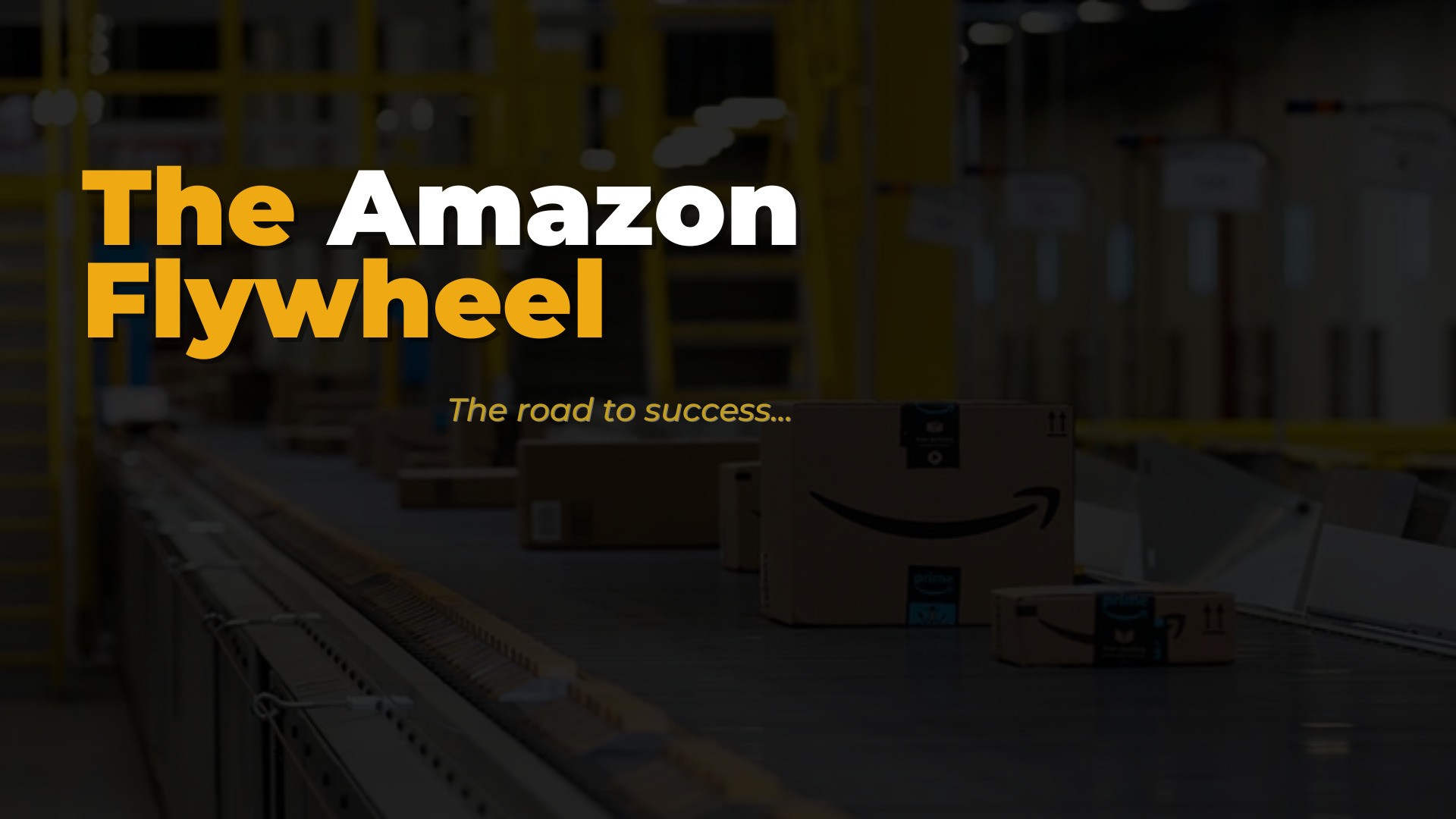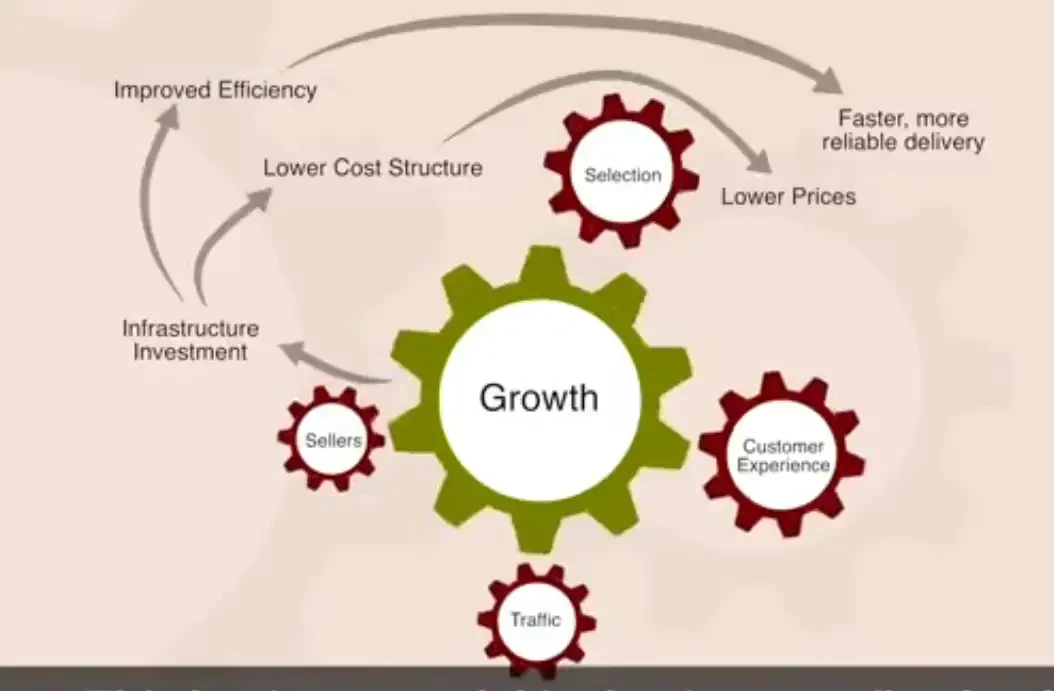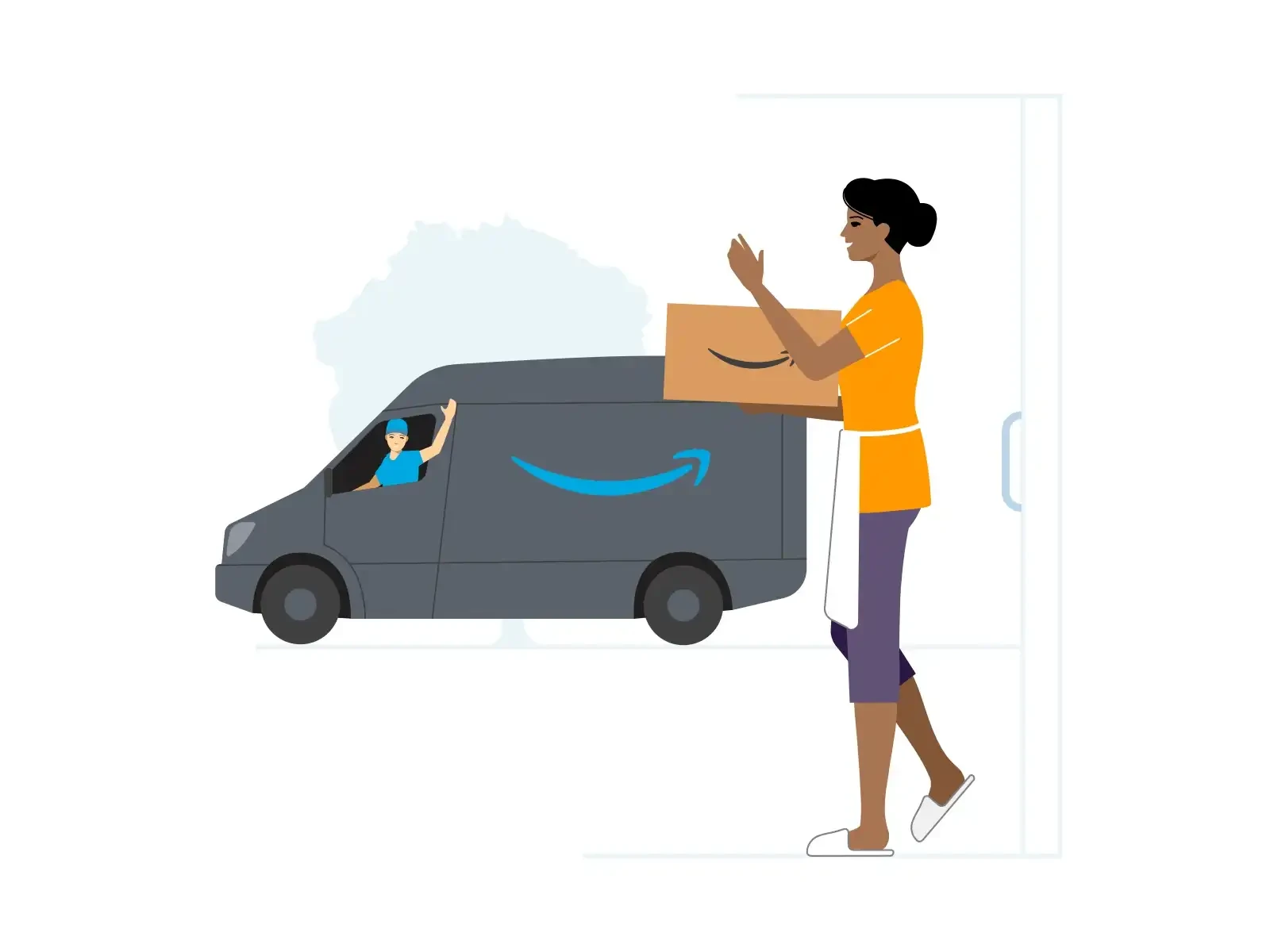The Amazon Flywheel Business Model
- A Backstory to Amazon Flywheel Business Model
- What is the Amazon Flywheel?
- Breaking down the Amazon Flywheel (3 Key Areas)
- Advantages of using the Amazon Flywheel for your business
- Gain Momentum through the Flywheel
Have you ever wondered what the secret is behind Amazon’s worldwide success? Here’s an article on their Magic Flywheel, a strategy that was first articulated in the ’90s and continues to underpin their business today
A Backstory to Amazon Flywheel Business Model
Amazon has always had a distinct corporate structure and growth strategy that has allowed them to capture over half of the US e-commerce market. They have taken full advantage of the flywheel effect and used it in their business. The Amazon Flywheel is Amazon’s version of Jim Collins’s business model in his book “The Best of the Greats.” It has been the envy of many companies since Jeff Bezos created it in 2001 when he drew the chart on a napkin. The model he uses for the Amazon flywheel is no secret, but those with courage, discipline, and assertiveness are using it to boost their earnings.
For example, Amazon Web Services (AWS) uses the flywheel effect to accelerate its business growth. AWS has successfully increased its overall business growth from 3.5% in 2016 to 4.7% in 2019, resulting in an improvement in the size and turnover of the company. When a flywheel gains momentum, it stimulates economies of scale and makes it more accessible for Amazon to accelerate its growth process. Amazon’s net sales have climbed by more than $48 billion since 2019, but how have they maintained such a high rate of growth year after year?
What is the Amazon Flywheel?
In Amazon’s business model, the flywheel is an economic engine that massively improves the customer experience through greater choice and lowers costs. In this flywheel model, Amazon gains momentum through customer experience and lower prices.
To achieve the goal of offering customers the most popular choice at the lowest price, Jeff Bezos took inspiration from the Flywheel Effect, a term coined by the strategist and consultant Jim Collins, in reshaping Amazon’s business model. He revealed that Amazon has a clear growth strategy that increases momentum and allows the company to stand still and let things unfold. He claimed that the flywheel, is a self-establishing loop that consists of a few key initiatives that feed and drive each other to build a long-term business.
In the flywheel model, Amazon uses lower prices to attract more customers, attract more third-party vendors, and as a result, offer a broader range of products at a minimal cost.
The flywheel strategy creates a cyclical business pattern of success:
Low prices > Prime membership > customer service > more sales > extra subscriptions
The Amazon Flywheel, like any other flywheel, is constructed so that every part of the process aids in the propagation of the others, resulting in a virtuous cycle. The overarching advantage for Amazon is more customers, increased market dominance, and, of course, more profits.
Breaking down the Amazon Flywheel (3 Key Areas)
The customer experience is the starting point for the Amazon Flywheel and customer experiences, are centred only on 3 essential elements:
Low prices for customers
Amazon made its prices relatively cheap in order to attract people. As a result of this, the site’s traffic increased.
Wider selection
Rather than selling just Amazon-exclusive items, Bezos and his team welcomed third-party merchants to help with the most crucial aspect of the business: wider selection. People are attracted to inexpensive pricing, but having a platform with more possibilities would be more tempting. As more brands joined the Amazon market, it created more variety and boosted supply, lowering prices even further.
Exceptional delivery experience
Amazon reinvests any profits it makes into structures that help cut prices and improve customer service along with providing an exceptional delivery experience. For example – more FBA (Fulfillment by Amazon) warehouses are developed, more delivery trucks and planes are purchased, more servers are brought in. All these improvements just for providing an exceptional delivery experience.
Advantages of using the Amazon Flywheel for your business
With a basic understanding of the Amazon flywheel, you and your business can benefit from its dynamism and growth power. Here are the biggest advantages of using it –
No Stockouts
Flywheel’s impact is that your products will remain in stock, and you will diversify your product range to give your customers more choices, and you will be able to lower prices to make your business more attractive.
Faster Growth
Your sales will improve as your products grow in rank, and the better the rank, the more chances you will get a better listing and visibility. Customer loyalty, advocacy and social evidence help generate positive reviews that improve your overall ranking and sales. Growth is accompanied by a rich customer experience and the ability to reduce the cost further.
Improved Customer Experience
Amazon’s success is based not only on an unrivaled variety of products and inventory at competitive prices but also on an exceptional customer experience that makes people come back for more. Similarly, your business will be able to do the same and provide an exceptional customer experience across its users by consistently putting emphasis on the customer experience on your platform that influences everything from price to value.
Gain Momentum through the Flywheel
In short, Amazon’s flywheel is a model for small changes, which in turn affect other aspects to keep the wheel running. Unlike ordinary flywheels, the Amazon flywheel is designed so that each aspect of the process contributes to multiplying the others, creating a virtuous cycle called a process.
The general idea behind the Amazon Flywheel is to use the customer experience to direct traffic to the platform, which means more sellers are using the Amazon Marketplace. When small businesses send their inventory to Amazon, it is fulfilled, managed, and shipped to Amazon as a whole, and the flywheel reinforces that advantage by giving the same third-party vendors to Amazon.
Just as the company’s growth resembles a flywheel, every step of its growth strategy has turned the flywheel and helped the company to build momentum to become what it is today.
The Flywheel model has propelled Amazon to its current position as a very successful e-commerce corporation with a sizable market share. It’s a powerful growth method that any business owner may use for their own company. It does, however, necessitate a certain amount of focus and commitment, which will not be simple to attain.
If you are a fresher looking to start a career in marketing, apply for The Marketing Launchpad – An Online Digital marketing course.





















